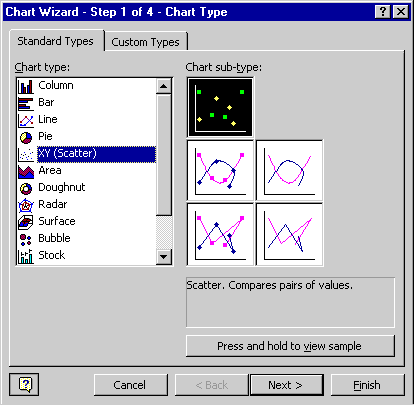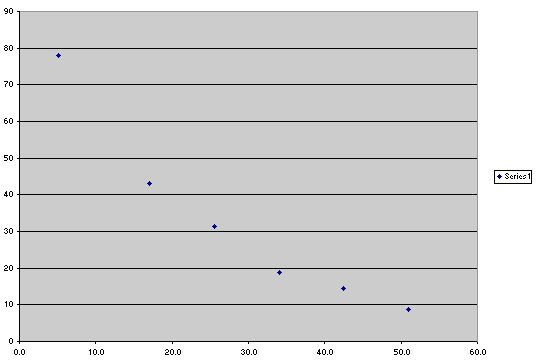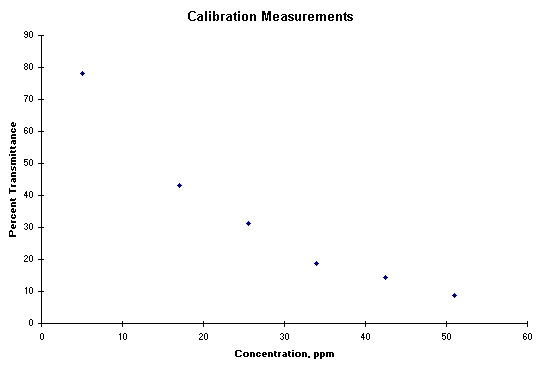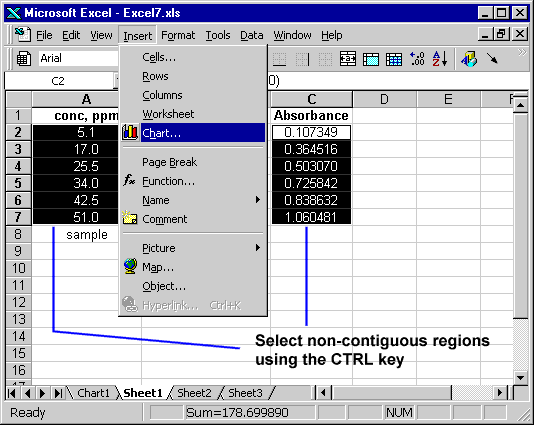Data Plots in Excel
Plotting data in Excel is pretty straightforward, and the plots can be
made to look pretty nice. Let's take a loot at our copper flame AA data
again (click on the image to download the Excel file).

To plot the calibration curve, simply select the data and select "Chart"
command of the Insert menu.

There are a variety of different chart types. About the only one that
you will ever need for scientific data is the "XY (Scatter)"
chart type. Do not choose the "Line" chart type
- in this chart, the X-data are considered labels, rather than values.

Follow the instructions of the Chart Wizard to create the graph. Excel's
default scatterplot looks like the following screenshot.

I personally prefer a graph that looks similar to the following image
- it is less cluttered. You can change the properties of an object on
the chart by selecting it and then choosing Format | Selected ...
from the menu (you can also hit Ctrl-1 or simply double-click the object).

 |
Watch the creation of this plot from scratch. Click on the above
image to download the Excel file. |
Plotting the calibration data forces us to immediately notice that our
calibration curve is far from linear. The problem is that we must use
the absorbance, not the percent transmittance, as our signal. Let's do
so and then check the linearity. In order to plot the data, you must be
able to select two columns of data that are not adjoining. After selecting
the X-block, hold the CTRL key before clicking on the first number of
the Y-block.

After plotting the data, adding a linear trendline to the plot gives
the reader a little more information.

 |
Watch the creation of this plot (click the above image to download
Excel file) |
|



